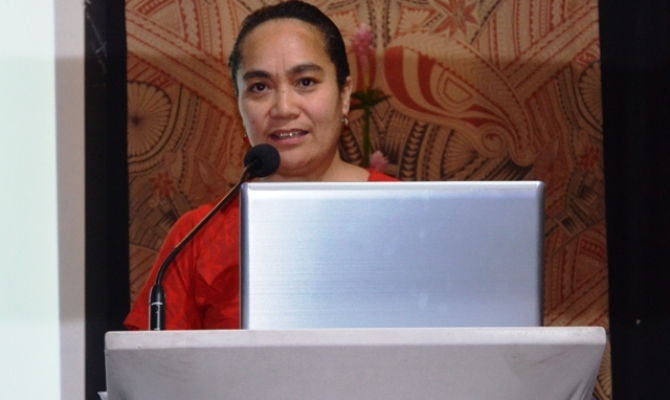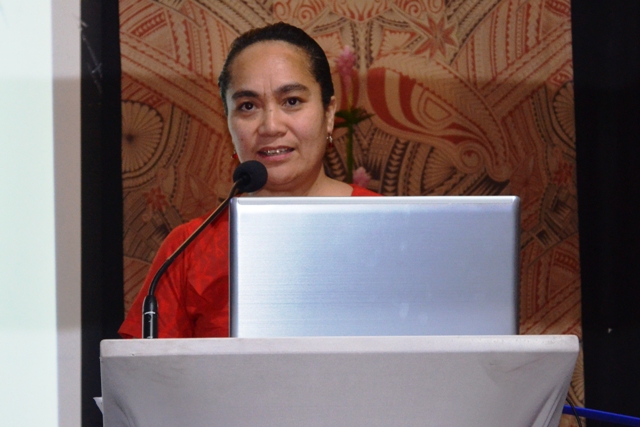
14 May 2015, Apia, Samoa, PCCR - A mixture of soft and hard engineering measures has been employed to save the eastern coastline of Tongatapu, the main island of the kingdom of Tonga.
Measures like constructing permeable groynes and short offshore breakwaters supplemented with beach replenishment and coastal planting is being trialled to save Tongatapu's east coast from gradual erosion and land loss.
And according to Lu'isa Tu'I'afitu Malolo, senior official of Tonga's Ministry of Meteorology, Energy, Information, Disaster Management, Environment and Climate Change - these artificial measures are working.
"We have a team that monitors the effectiveness of these measures every three months," says Malolo. "The results so far indicate that these sedi-tunnels, offshore breakwaters and coastal planting are working. We're hoping to be able to calculate the rate of beach replenishment as a direct result of the engineering measures we have put into place."
Malolo presented the result of her ministry's trialling of coastal protection measures at the Pacific Climate Change Roundtable currently underway in Samoa this week. Work on protecting Tongatapu's east coast she says began in August 2013, and this is due to end this December. Funded by the European Union, Malolo said the coastline protection project was implemented by the Secretariat of the Pacific Community (SPC).
"We estimate that 4,000 people are benefiting from this project on the east coast. Now with support from SPREP's Pacific Adaptation to Climate Change programme and the EU GIZ Adaptation to Climate Change and Sustainable Energy, we're replicating this save the shoreline project from Tongatapu's east coast to the island's western coastline."
Invited to list lessons learnt in the 42-month long project, Malolo said proper community engagement and planning from the very beginning was important. Explaining climate change science and the reasoning behind the project was key to community understanding, she said.
There are no shortcuts she recommended, saying like any engineering work, feasibility studies including environment impact assessments had to be done.
Malolo said there are plans to replicate the coastline protection project to other islands in the kingdom, namely the Haa'apai and Vava'u groups.
The Pacific Climate Change Roundtable is held from 12 – 14 May in Apia, Samoa. The event in its current format has been coordinated by SPREP with guidance from a steering committee.
The PCCR has been made possible with support from the Government of Switzerland, Government of Samoa, Government of Australia, European Union, GIZ, United Nations Development Program (UNDP), Secretariat of the Pacific Community (SPC), Pacific Islands Forum Secretariat (PIFS), University of the South Pacific (USP) and the Pacific Council of Churches (PCC). Additional funding support was provided by the EU-GIZ Adapting to Climate Change and Sustainable Energy (ACSE) Programme, and Climate Analytics through its High Level Support Mechanism (HLSM) project as well as the United States Agency for International Development (USAID). Samisoni Pareti/#pccr2015
